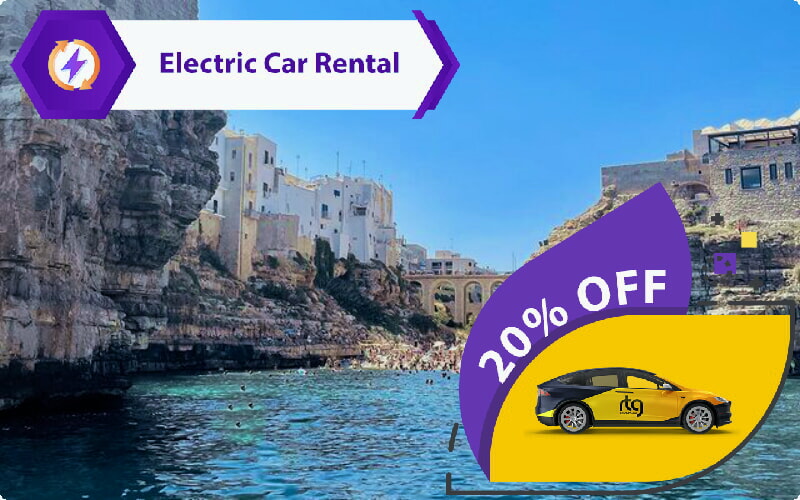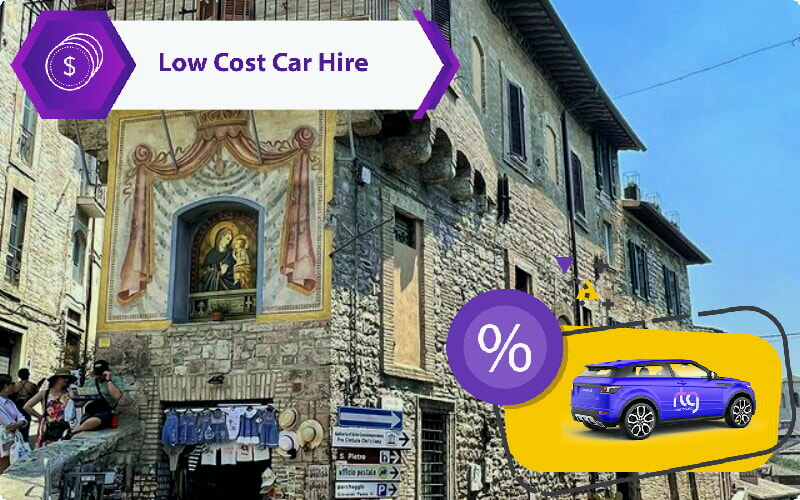 Up to
-35%
Up to
-35%
Renting a car in Italy can be a fantastic way to explore the country's picturesque landscapes, historic cities, and charming villages at your own pace. However, there are several important factors to consider to ensure a smooth and enjoyable experience. Here’s a comprehensive guide to help you navigate the process.
Consider the type of trip you are planning when selecting a car. For city driving, a compact car is ideal due to narrow streets and limited parking. For countryside exploration, a more robust vehicle might be preferable. Ensure the car has adequate space for your luggage and travel companions.
Insurance is a crucial aspect of car rental. Basic insurance is usually included, but it often comes with a high deductible. Consider purchasing additional coverage to reduce your liability. Check if your credit card offers rental car insurance as a benefit.
Fuel in Italy is relatively expensive. Most rental cars use diesel, which is slightly cheaper than gasoline. Be aware of toll roads (autostrade) and have cash or a credit card ready for toll payments.
By understanding these key points, you can enjoy a hassle-free car rental experience in Italy, allowing you to fully immerse yourself in the beauty and culture of this incredible country.

Italy offers a variety of electric cars for rent, catering to both eco-conscious travelers and those looking to experience the latest in automotive technology. Here are some popular electric car models available for rent in Italy, along with their average daily rental rates:
These rates can vary based on the rental company, location, and season, so it's always a good idea to book in advance and compare prices to get the best deal.




Exploring Italy by a rented car offers the freedom to discover its diverse landscapes and historic cities at your own pace. Here are some top destinations to consider:
The capital city is a must-visit, with iconic landmarks such as the Colosseum, Vatican City, and the Roman Forum. Driving through Rome allows you to explore its ancient streets and vibrant neighborhoods.
Known as the birthplace of the Renaissance, Florence boasts stunning architecture and world-class art museums. Don’t miss the Uffizi Gallery and the Florence Cathedral.
For a scenic drive, head to Tuscany. The rolling hills, vineyards, and charming towns like Siena and San Gimignano offer picturesque views and delightful stops.
Drive along the Amalfi Coast for breathtaking coastal views. Visit towns like Positano, Amalfi, and Ravello, each offering unique charm and stunning vistas.
While cars are not allowed in Venice, you can drive to nearby cities like Verona and Padua, then take a train or boat into the heart of Venice to experience its canals and historic sites.

One way car rentals in Italy offer flexibility for travelers who wish to explore the country without the need to return to their starting point. This option is particularly convenient for those planning to cover long distances or visit multiple cities. Many car rental companies, such as Hertz, Avis, and Europcar, provide one way rentals with varying fees depending on the drop-off location.
For example, renting a car in Rome and returning it in Milan might incur an additional fee of around €50-€100. Similarly, picking up a vehicle in Florence and dropping it off in Venice could cost an extra €60-€120. These fees are generally in line with average European rates, making it a viable option for travelers looking to maximize their Italian adventure.
It is advisable to check with individual rental companies for specific rates and terms, as prices can vary based on the car type, rental duration, and season. Booking in advance can also help secure better deals and ensure availability.

To rent a car in Italy, you must be at least 21 years old, although some rental companies may require you to be 25. You will need a valid driver's license, a credit card in your name, and an International Driving Permit (IDP) if your license is not from an EU country.
If your driver's license is issued by a country outside the European Union, you will need an International Driving Permit (IDP) in addition to your regular driver's license. The IDP translates your license into multiple languages, including Italian.
Basic insurance coverage, including Collision Damage Waiver (CDW) and Theft Protection, is typically included in the rental price. However, you may want to consider additional coverage for personal accident insurance and liability insurance to ensure full protection.
Most car rental companies in Italy require a credit card for the security deposit. Some companies may accept a debit card, but this is less common and may come with additional restrictions or requirements.
Additional fees can include charges for additional drivers, young driver fees for those under 25, GPS rental, child seats, and one-way rentals. Be sure to read the rental agreement carefully to understand all potential charges.
Many car rental companies allow you to drive your rental car to other European countries, but you should confirm this with the rental company beforehand. There may be additional fees or restrictions, and you should ensure that your insurance coverage extends to other countries.
In case of an accident, contact the local authorities and your rental company immediately. For breakdowns, most rental companies provide roadside assistance; the contact information should be included in your rental agreement. Always keep a copy of the rental agreement and emergency contact numbers with you.
